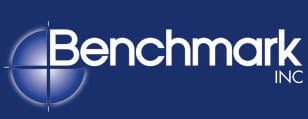 By Tom Irvine, RRC, CDT
By Tom Irvine, RRC, CDT
Vice President
Good roof design starts with identification and evaluation of the project-specific criteria that will drive key decisions and point to the best possible solutions. The consultant must meet the challenge of providing the Owner with viable options that not only suit the unique objectives and budget of each project, but also satisfy the applicable building codes and the Owner’s property insurance requirements.
For any roof replacement concept to be approved by permitting authorities having jurisdiction (AHJ) and by property insurance plan reviewers, it must be mutually compliant. Researching project-specific codes and standards and having a solid understanding of how they influence design options is a prerequisite for specifying successful projects.
The most complicated situations are those where design options are limited by the need to meet multiple stacked, and potentially conflicting, code and insurance requirements. In our opinion, there seems to be an increasing trend of standards being developed by entities that don’t duly consider the associated technical and cost impacts on the industry at large. A related challenge occurs when the AHJ updates their code adoptions between the start of design and when the job is bid and/or awarded; thus, changing the basis of design and potentially triggering design changes and cost increases.
Benchmark’s roof consulting team is lead by a technical committee, which monitors the industry for code developments; and supports Benchmark’s associates by developing resources, promoting a culture of learning, and performing internal quality assurance reviews. The committee devotes considerable effort to navigating requirements applying to the following topics among others.
Wind Uplift
Minimum roof wind design requirements are defined by the building code, which mandates adherence to the version of ASCE-7 in use when the code is updated. There are large variances between the 2005, 2010 and 2016 versions of ASCE-7, and it is critical to identify the correct standard to apply to each project. Some hurricane prone regions, such as Miami Dade, have special wind design and system testing/approval processes, which must be strictly followed in order to obtain a permit.
From a property insurance standpoint, many of Benchmark’s clients are insured by an FM Global (FMG) affiliate, or another insurance company that requires adherence to FMG standards. It is important in those cases to calculate wind uplift design requirements based on the applicable version of ASCE-7 and FMG’s RoofNav calculator; to ensure the wind design satisfies both.
We are noticing an increasing number of AHJs that have fallen behind in refreshing their code adoptions, then jump to the latest (i.e. 2018) family of I-Codes. This triggers use of ASCE 7-16 for wind design, which results in higher pressure coefficients, changes in design wind speeds, and modifications to wind uplift zones, as compared to prior versions. We are also seeing that local municipalities are adopting the 2018 I-Codes in advance of state adoptions. It is important to research local adoptions, both past and planned, to ensure designs will comply.
It is also interesting to note that FMG’s wind design standard is largely based on ASCE 7-05, which is less stringent than the 7-16 standard triggered by the 2018 International Building Code. FMG has committed to publishing its updated wind design standard this year, so we will see if it alleviates this conflict, or adds another wrinkle.
Hail Resistance
With the increasing frequency and severity of hailstorms in the central U.S., FMG has significantly ramped-up its hail resistance requirements. In 2018, FMG updated its Loss Prevention Data Sheet 1-34 – Hail Damage, to significantly expand the Very Severe Hail (VSH) zone region, and unveil its VSH testing protocol. As manufacturers scrambled to schedule and run new hail testing, FMG allowed the use of Severe Hail rated assemblies, on a case-by-case basis.
In 2019, FMG limited roof approvals in the VSH zone to systems that have passed VSH testing, or roofs that are protected by concrete pavers or poured concrete toppings.
There are currently 975,173 roof assemblies in FMG’s RoofNav database, but only 588 are VSH compliant. Most all VSH rated single-ply systems must be adhered to OSB or plywood substrates—arguably poor coverboards due to their susceptibility to moisture damage, poor long-term membrane adhesion, etc. Manufacturers are diligently working toward developing new VSH-compliant systems.
Energy Efficiency
There are significant changes enacted by the 2018 edition of the International Energy Conservation Code (IECC) when comparing it to the 2012 or 2015 versions. The 2018 update triggers increased minimum roof insulation R-value; and the use of cool roofs and air barriers in different climate zones than the previous code.
Building Code changes are generally intended to improve the life safety aspects of roof construction, in addition to improving the energy efficiency of the building envelope. FM Global’s intentions are to reduce the potential for loss and protect its insureds from business disruption.
For roof designers, it is critical to understand what code and insurance requirements apply, or will apply, when fitting the pieces of each unique roof design puzzle together.
Related Article: A Case Study of the Cost of FM Global’s Very Severe Hail (VSH) Rating
